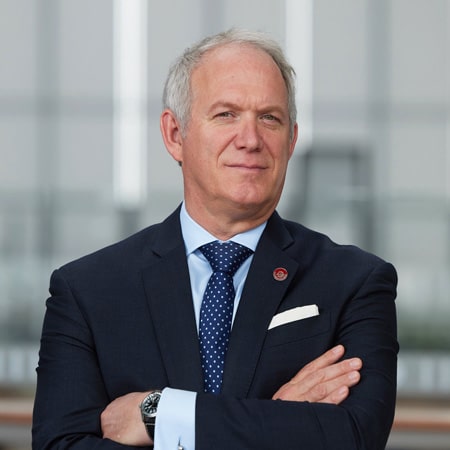While global growth has been showing resilience and prospects remain positive in the short-term, a number of challenges stemming from structural issues such as fragmentation, protectionism and climate change will likely dampen the outlook in the medium- to longer-term, as trade patterns reshape and economies decouple further, speakers at the recent BNP Paribas Global Official Institutions Conference found.
“I am cautiously optimistic,” moderator Luigi Speranza, Global Head of Markets 360 & Chief Economist of Global Markets, BNP Paribas, said, echoing the overall sentiment on the panel discussion. “The global economy has been resilient, especially in view of the tightening monetary conditions we have experienced. That’s been encouraging.”
In its forecast released 16 July, the International Monetary Fund (IMF) projects global growth at 3.2% in 2024 and 3.3% in 2025. “That hasn’t changed much in the past year,” said Petya Koeva Brooks, Deputy Director, Research Department, IMF, adding: “If we look at the big picture, it doesn’t look that bad.”
Although global growth is still well under pre-pandemic levels, speakers noted that there are positive signs in the short-term. The view is very different in the medium-term: While the short-term looks resilient, several issues start emerging when looking at a five-year horizon.

❝ I am cautiously optimistic. The global economy has been resilient, especially in view of the tightening monetary conditions we have experienced. That’s been encouraging. ❞
Fragmentation or divergence?
Moving away from traditional multilateral partnerships, trade and financial partnerships among countries have recently shifted to geopolitical alignments rather than geography. Economists forecast that geoeconomic fragmentation will negatively impact global growth in the medium term.
“On the downside, there is a risk for geoeconomic fragmentation to escalate. This is a key risk for our medium-term outlook,” Koeva Brooks said. At a ceremony marking the 60th anniversary of the UN Trade and Development agency (UNCTAD) on 12 June 2024, UN Secretary-General Antonio Guterres said: “The international trading system is challenged on all sides; teetering on the verge of fragmentation. […] Trade has become a double-edged sword: a source of both prosperity and inequality; interconnection and dependence; economic innovation and environmental degradation.” As a result, multilateral cooperation has weakened across the world with higher tariffs and the number of new trade barriers tripling since 2019.
❝ On the downside, there is a risk for geoeconomic fragmentation to escalate. This is a key risk for our medium-term outlook. ❞
Koeva Brooks noted: “What’s interesting is that we’ve seen signs of [fragmentation] already. When we look at trade within blocks, as opposed to between blocks, the blocks being defined by the UN vote on Ukraine, we have seen that trade within blocks as held up much better than between blocks. This is especially true for trade in strategic sectors and related to climate technology, which is quite worrisome.”
But fragmentation is not the whole story.
“Fragmentation is a comfortable catch word; the reality is a lot more complex,” said Sebastien Jean, Associate Director of the Geoeconomics and Geofinance initiative, French Institute of International Relations (IFRI). “I really think there is a question mark here: the complex reshuffling of trade patterns we are seeing so far doesn’t tell us what the end story is.”
Jean explained: “What we are witnessing is indeed a lot of fractions in international trade, with a difference between real war, trade war and tension. Real war has proved sudden and brutal for decoupling between Russia and the EU. The share of the EU in Russian foreign trade has declined by two-thirds, more or less.” He further noted that the share of China in US imports has declined by more than one-third in the seven years of trade war between the two countries, and trade tensions between the EU and China have not yet had any material impact.
While direct trade relationships have clearly declined, indirect connections have so far widely picked up the slack, panelists noted. As a result, fragmentation has become trade diversion instead of decoupling.
The role of connector countries in the reshuffled trade patterns
The flow of foreign direct investment (FDI), for example, has been telling in the reshuffling of trade patterns. “FDI to non-aligned countries has surged, while between blocks it has plummeted,” observed Koeva Brooks at IMF.
Connector countries, like Vietnam, Malaysia and Turkey, have become the buffer between trade partners under tension. For example, as US-China trade relations became increasingly under pressure, China moved its manufacturing to connector countries like Vietnam or Malaysia.
The question then becomes what will be the medium-term role of connector countries, as they upgrade their skills and accumulate know-how?
This is where multilateral banks like the Asian Infrastructure Investment Bank (AIIB), can step in to facilitate cross-border connectivity in the medium term to combat geopolitical fragmentation. Andrew Cross, Chief Financial Officer, at explained: “By 2030, AIIB’s target is for cross-border connectivity projects to represent 25-30 percent of all financing approvals. AIIB will prioritise projects that connect vital infrastructure and economies that are currently not linked within borders, across Asia, and between Asia and the global economy. Building a strong business case for these types of connectivity projects is critical in changing the narrative around fragmentation.”

❝ The more challenging the world is, the greater the value of having these [multilateral] institutions where very diverse countries can come together […] for a common good. ❞
Resilience of Emerging Markets
Emerging markets have shown resilience in the face of recent shocks and have performed well after the Covid-19 pandemic, partly due to an appropriate policy mix. Emerging markets “are reaping the benefits of improved frameworks both on the monetary and the fiscal side over the past decade. Relative to inflation, many emerging markets were ahead of the curve relative to advanced economies,” said Koeva Brooks at IMF.
However, the outlook now looks more uncertain as higher-for-longer policy rates in advanced economies and persistent inflation are reducing the scope of further policy easing.
Koeva Brooks said: “Fiscal support has come with accumulation of debt. Now, in advanced economies, support has to be withdrawn for debt to come down and replenish buffers for the next crisis. This is where we could see more bumps in the road. Ultimately, the medium-term prospect in emerging markets is not great. Hence our long-term recommendations for structural reforms even though we all know how hard it is to implement in practice.”
From a multilateral perspective, fragmentation and protectionism are among the main reasons multilateral institutions exist, said Cross at AIIB: “The more challenging the world is, the greater the value of having these institutions where very diverse countries can come together. We have 109 members. Countries can come, still with their national interests, but can come together for a common good. And in our case the common good is how do you build infrastructure in Asia, how do you close the infrastructure gap, how do you make a positive difference in the climate agenda and how do you do that in a group of like-minded countries and individuals.”
